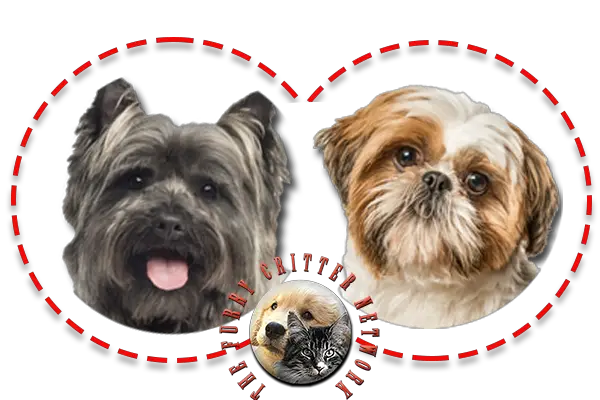Behavior
Cairn Terriers exist happily in an apartment when sufficiently exercised. They are very active indoors and suffice even without a yard. Daily walks help keep Cairn terriers happy and healthy. Fenced-in yards are strongly recommended for safety and well-being as well as being kept on leash when not in the yard.
Cairn Terriers are particularly easily trained; ethical breeders strongly suggest obedience school or some other type of training to direct Cairn Terriers's focus on the owner as the one in command if they are going to be used for hunting. If allowed to take control of the household, behavior problems may develop that only can be resolved by hiring a professional dog trainer. Many breeders only sell puppies to dedicated dog owners who agree to basic obedience school.
Cairns are active dogs, thus need a daily walk. Play takes care of a lot of their exercise needs; however, as with all breeds, play will not fulfill their primal instinct to walk. Dogs which do not get to go on daily walks are more likely to display behavior problems. They also enjoy a good romp in a safe, open area off leash, such as a large, fenced yard.
Health
Cairn Terriers shed very little, but always should be hand-stripped. Using scissors or shears can ruin the dog's rugged outer coat after one grooming. Hand-stripping involves pulling the old dead hair out by the roots. If done incorrectly, this can cause discomfort to the dog, causing it to shy away from future hand-stripping. Removing the dead hair in this manner allows new growth to come in. This new growth helps protect the dog from water and dirt.
Cairn Terrier ancestors are from Scotland, where the wire coat repels water and keeps the dog dry even in rainy or damp climates. Keeping the Cairn Terrier coat in its original state will prevent possible skin irritations. As dead hair is removed by stripping the coat, new growth comes in, and the skin and coat remain healthy. Clipper-cutting a Cairn might destroy the protective wire coat unique to this breed.
It is wise to have a pet examined to rule out heritable skin diseases when a Cairn is obtained from unknown sources (i.e. pet stores, rescues, or puppy mills).
Breeders, owners, and veterinarians have identified several health problems that are significant for Cairns. Some of these diseases are hereditary, and others occur as a result of nonspecific factors (e.g., infections, toxins, injuries, or advanced age).
Currently, the Cairn Terrier Club of America, along with the Institute for Genetic Disease Control in Animals, maintains an open registry for Cairn Terriers in hopes of reducing the occurrence of hereditary diseases within the breed. Breeders voluntarily submit their dogs' test results for research purposes as well as for use by individuals who seek to make sound breeding decisions.
Some of the more common hereditary health problems found in the Cairn are:
Bronchoesophageal fistula
Cataracts
Corneal dystrophy
Craniomandibular osteopathy (lion jaw)
Diabetes mellitus
Entropion
Hip dysplasia
Hypothyroidism
Krabbe disease (globoid cell leukodystrophy)
Legg–Calvé–Perthes disease
Lens luxation
Luxating patella
Ocular melanosis
Portosystemic shunt
Progressive retinal atrophy
Soft-tissue sarcoma
Von Willebrand disease
These dogs are generally healthy and live on average about 12 to 17 years.






